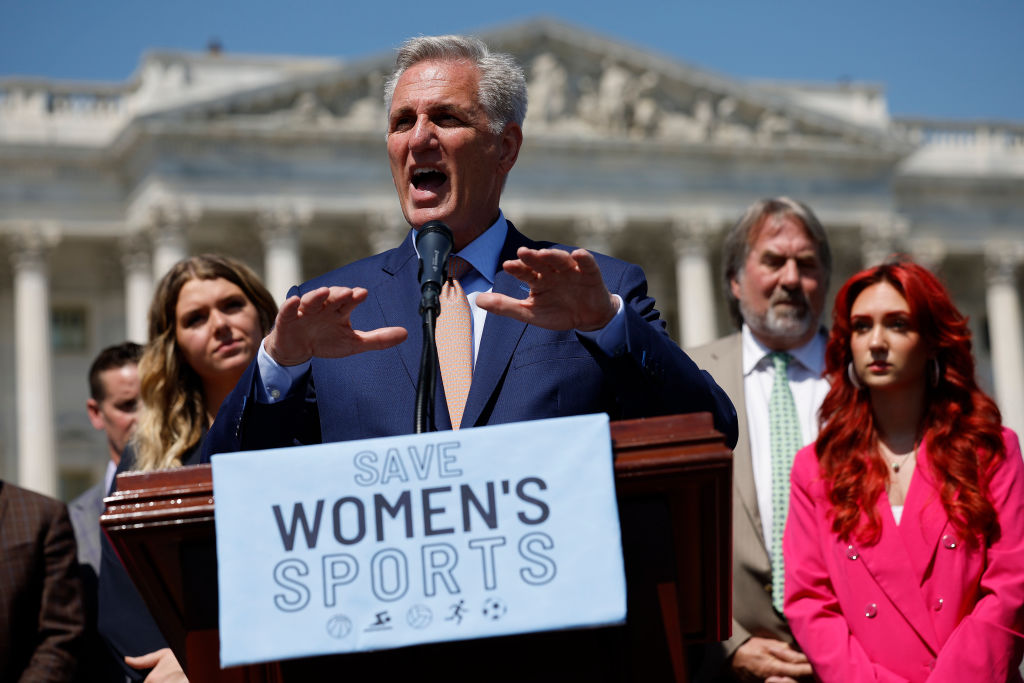Medicare Advantage and Part D Final Rule Affects Marketing and Sales Landscape for Not Only MA Plans and PD Sponsors, but also TPMOs and FDRs
In a prior article, my colleagues Judith Waltz and Alexandra Shalom summarized the takeaways related to health equity and utilization management provisions from the Centers for Medicare and Medicaid Services (CMS) Final Rule that amended regulations for Medicare Advantage (MA or Part C), Medicare Cost Plan, the Medicare Prescription Drug Benefit (Part D) programs, and Programs of All-Inclusive Care for the Elderly (PACE). The Final Rule was published on April 12, 2023. This article focuses on the changes to the Medicare Advantage (MA) and Part D programs marketing rules at 42 C.F.R. parts 422 and 423, which are applicable for all contract year 2024 marketing and communications beginning September 30, 20231:
- Prior to the Final Rule, only MA organizations and Part D sponsors submitted marketing materials to the CMS Health Plan Management System (HPMS), which is CMS’ system of record for marketing materials. The Final Rule requires materials to be submitted to HPMS by a Third Party Marketing Organization (TPMO) for multiple organizations or plans with prior approval by each MA organization or Part D sponsor on whose behalf the materials were created or will be used (42 C.F.R. §§ 422.2261(a)(2); 423.2261(a)(2));
- MAOs and Part D sponsors must now notify enrollees annually, in writing, of the ability to opt out of phone calls regarding MA and Part D plan business (42 C.F.R. §§ 422.2264(b); 423.2261(b));
- Agents must explain the effect of an enrollee’s enrollment choice on their current coverage whenever the enrollee makes an enrollment decision based on changes to the pre-enrollment checklist (PECL) (42 C.F.R. §§ 422.2267(e)(4)(viii); 423.22677(e)(4)(viii));
- CMS’ required questions and topics regarding beneficiary needs in a health plan choice must be fully discussed prior to enrollment. Topics include information regarding primary care providers and specialists, pharmacies (i.e., whether those pharmacies are in-network), prescription drug coverage and costs, costs of health care services, premiums, benefits, and specific health care needs (42 C.F.R. §§ 422.2274(c)(12); 423.2274(c)(12));
- The regulations simplify plan comparisons by requiring the Summary of Benefits to list the medical benefits on the top half of the first page and in a specific order (42 C.F.R. §§ 422.2267(e)(5)(A)(1)-(10));
- The Final Rule limits the time that a sales agent can call a potential enrollee to no more than 12 months following the date that the enrollee first asked for information (42 C.F.R. §§, 422.2264(b); 423.2264(b));
- In one narrowing of the existing regulations, CMS limited the requirement to record calls between TPMOs and beneficiaries to marketing (sales) and enrollment calls, but clarified the recording requirement to include the audio portion of virtual connections such as video conferencing and other virtual telepresence methods (42 C.F.R. §§ 422.2274(g)(2)(ii); 423.2274(g)(2)(ii));
- CMS now prohibits a marketing event from occurring within 12 hours of an educational event at the same location (42 C.F.R. §§ 422.2264(c)(2)(i); 423.2264(c)(2)(i));
- The Final Rule clarified that the prohibition on door-to-door contact without a prior appointment still applies after collection of a business reply card or scope of appointment (SOA) (42 C.F.R. §§ 422.2264(a)(2)(i)(A); 423.2264(a)(2)(i)(A));
- CMS prohibited marketing of benefits in a service area where those benefits are not available, unless unavoidable because of use of local or regional media that covers the service area(s) (42 C.F.R. §§ 422.2263(b); 423.2263(b));
- Further, CMS prohibited the marketing of information about potential savings that are based on a comparison of typical expenses borne by uninsured individuals, unpaid costs of dually eligible beneficiaries, or other unrealized costs of a Medicare beneficiary (42 C.F.R. §§ 422.2262(a)(1)(ii); 423.2262(a)(1)(ii));
- The Final Rule requires TPMOs to list or mention all of the MA organizations or Part D sponsors that they represent on marketing materials (42 C.F.R. §§ 422.2263(b); 423.2263(b));
- With an eye to compliance, CMS now requires MA organizations and Part D sponsors to have an oversight plan that monitors agent/broker activities and reports agent/broker non-compliance to CMS (42 C.F.R. §§ 422.2272(e); 423.2272(e));
- The Final Rule modified the TPMO disclaimer to state the number of organizations represented by the TPMO as well as the number of plans (42 C.F.R. §§, 422.2267(e)(41); 423.2267(e)(41));
- CMS modified the TPMO disclaimer to add State Health Insurance Programs (SHIPs) as an option for beneficiaries to obtain help (and determine all plan options in a region) in addition to Medicare.gov and 1-800-MEDICARE (42 C.F.R. §§ 422.2267(e)(41); 423.2267(e)(41));
- The Final Rule prohibited the collection of SOA cards at educational events (42 C.F.R. §§ 422.2264(c)(1)(ii); 423.2264(c)(1)(ii));
- CMS placed discrete limits around the use of the Medicare name, logo, and Medicare card, noting in the preamble:“If CMS determines that the Medicare name, CMS logo or official products like the Medicare card have been used in a misleading manner by an [first tier, downstream and related entity (FDR)], CMS would address the issue with the MA organization or Part D sponsor on whose behalf the FDR was operating and hold the sponsoring organization accountable for all misleading information.”(42 C.F.R. §§ 422.2262(a)(1); 432.2262(a)(1));
- The Final Rule prohibits the use of superlatives (for example, words like “best” or “most”) in marketing unless the material provides documentation to support the statement, and the documentation is based on data from the current or prior year (42 C.F.R. §§ 422.2262(a)(1)(ii); 432.2262(a)(1)(ii)); and
- CMS now requires 48 hours between an SOA and an agent meeting with a beneficiary, with exceptions for beneficiary-initiated walk-ins and the end of a valid enrollment period (42 C.F.R. §§ 422.2264(c)(3)(i); 423.2264(c)(3)(0).2
CMS noted various reasons for the marketing changes including its audit of hundreds of marketing and enrollment calls and complaints to 1-800-MEDICARE. In its review of marketing and enrollment calls, CMS found that the majority of such calls (i.e., over 80%) only discussed one plan option from one MA organization—agents rarely, if ever, informed the beneficiary that there were multiple plans available in their service area.3 This led CMS to add “SHIP” to the TPMO disclaimer and to require TPMOs to disclose the names of all entities the TPMO represents. CMS also noted that in over 80% of the calls, agents and brokers failed to ask pertinent questions to help a beneficiary enroll in a plan that best meets the individual needs (which is statutorily required under Social Security Act 1851(j)(2)(D))4—e.g., whether there was a specialist that a beneficiary sees or wished to see and whether that specialist was in the plan’s network, whether the beneficiary would prefer lower copays and a higher premium or vice versa, or whether the beneficiary wanted dental and hearing benefits.5 This finding led CMS to require certain questions and topics to be fully discussed prior to enrollment—information regarding primary care providers and specialists, pharmacies, etc. With regard to the list of required elements to be covered prior to enrollment, CMS noted that it will provide more detailed questions and areas to be covered in sub-regulatory guidance.6
In the complaints to 1-800-MEDICARE, CMS noted that agents failed to inform the beneficiary that the individual’s doctors were not in the MA plan’s network, inaccurately told beneficiaries that there would be no cost, or that their existing coverage would be affected by enrolling into a new MA or Part D plan.7 Those complaints drove changes to the PECL.
Several of the changes revisited prior marketing rules. For example, the prohibition to advertising benefits not available in the service area was previously codified in section 30.1 of the 2016 Medicare Marketing Guidelines.8 Giving the beneficiaries adequate time to think about their options was a key factor in changing some requirements relating back to older marketing guidance. Prior to 2018, CMS sub-regulatory guidance prohibited holding marketing events following an educational event, distributing SOA cards at educational events ,and setting up future individual marketing appointments at such events.9 In its pre-2018 marketing guidance, CMS interpreted the standard of requiring an agreement in advance between an SOA and an agent meeting with a beneficiary to mean 48 hours prior to the appointment when practicable. CMS reverted to the 48-hour rule, and because of the subjective interpretation of “when practicable,” CMS did not include that “when practicable” caveat to the 48-hour rule, rather setting certain specific exceptions (beneficiary-initiated walk-ins and the end of a valid enrollment period).
In the Final Rule, CMS noted several times the MA and Part D plans’ responsibility for TPMOs’ activities,10 and noted its concern with the previously reactive nature of plans addressing inappropriate agent and broker behavior, when it should be more proactive. In a new provision, CMS now specifically requires plans to have a monitoring and oversight plan and to report agent non-compliance to CMS. To assist with identifying and stopping poor performing agents and brokers more quickly, whether they are independent, captive, or employed agents or brokers, at a minimum, CMS stated that a proper oversight program will include:
- the review of internal grievances and 1-800-MEDICARE complaints,
- reviewing a random sampling of past audio sales/marketing/enrollment calls,
- listening to sales/marketing/enrollment calls in real-time,
- secretly shopping in-person education and sales events, and
- secretly shopping web-based education and sales events.”11
Further, as with other requirements, CMS stated that it will provide additional information in its Medicare Communications and Marketing Guidelines (MCMG), including examples in the future.12
CMS recognized that the revised marketing requirements will result in more work/burden. In its tightening of the rule related to marketing of benefits in service areas where those benefits are available, CMS stated: “Protecting beneficiaries from misleading advertisements promoting benefits for which beneficiaries are ineligible far outweighs the perceived burden of organizations having to create marketing materials that specifically reflect the benefits offered by their plans in specific service areas.”13
Conclusion
The April 14, 2023 Final Rule affects the marketing and sales landscape for not only MA Plans and Part D sponsors, but also TPMOs and FDRs. The MCMG will provide additional detail to flesh out those requirements, but the preamble language to the Final Rule is helpful in understanding CMS’ intent.
1 88 Fed. Reg. 22120, 22120 (Final Rule, Apr. 12, 2023).
2 CMS noted that it is not addressing its proposal to prohibit TPMOs from distributing beneficiary contact information in this Final Rule and may address it in a future Final Rule.
10 CMS specifically noted sections 422.2274(g)(1) and 423.2274(g)(1).
11 88 Fed. Reg. at 22253.






